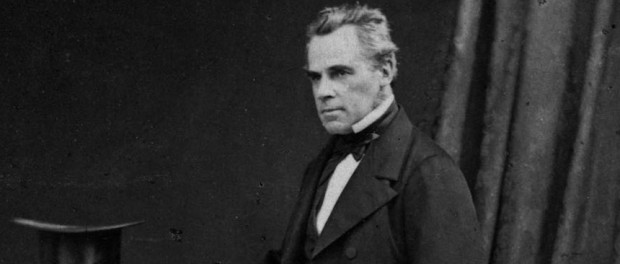Cartier’s Dream: The Old Dinosaur of Quebec Law & Other Quebec Curios
Part Three of a Supposedly Two-Part History of Quebec Law
 Sir George-Étienne Cartier (detail). Photograph by William Notman, date unknown. Photo courtesy Library and Archives Canada/PA-074102
Sir George-Étienne Cartier (detail). Photograph by William Notman, date unknown. Photo courtesy Library and Archives Canada/PA-074102
George-Étienne Cartier, one of the Fathers of Confederation, can also be considered, in a way, the father of modern Quebec law. It is he that was the spokesman for the codification of the Quebec law in the 1800s. After two centuries of conquering, reconquering, and unconquering, the state of Quebec law had become a mix of civil and common law and, if you didn’t know either English or French, was sort of a messy business. From ancient Roman law to the old Paris customs to the English criminal laws, Quebec was a real melting pot, as it were, of two hundred plus years of laws of a people.
Codification would ensure the laws would be available, for the first time, to the “common man”. To further ensure this, Cartier insisted on the bilingualism of the code, side by side, which would render both linguistic groups happy: both would finally be able to have a copy of the laws in their hands. To execute this huge project, he named a group of seven people: three judges (two civil law judges, one common law), one clerk, and three advocates to examine all the laws known to them, analyse them, and write them down. And they did. In a process that took about ten years, the committee gradually codified Quebec law, each article with its proper source, each article organised in its proper section.
The Lower Canada Code was adopted in 1866, one year before Confederation, and continued through into the twentieth century. All the jurisprudential rules scattered throughout Quebec’s history were codified, the old ordinances of intendants long gone were found and translated. This old, creaking dinosaur of a code is still alive and kicking, in a sense, in the old contracts of the old century that continue to this day. The final dispositions will continue to be around until those old contracts expire. And yet the Lower Canada Code, in its various articles, still lives on today, with some sections in the new civil code, such as the section on Obligations, retaining much of its heritage from the Lower Canada Code.
When the Civil Code of Quebec came in and replaced the Lower Canada Code in 1994, on the surface, it would seem to be a major paradigm shift, complete with explosions and celebrations. Except it wasn’t. It was a long time coming, passed in 1991 and the work that had been put into it done long before. But the code that we follow today is special in that finalises Quebec’s status as a province caught between two legal traditions, following both but belonging exclusively to neither.
Pick T.A. Wellington’s brain with your questions about Quebec law at [email protected]





